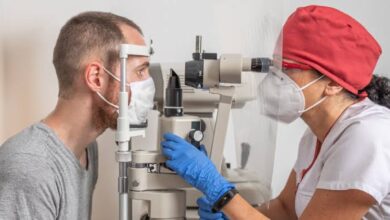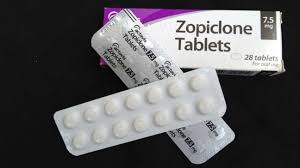The Intersection of Nutrition and Physical Therapy: Optimizing Recovery

Recovering from injury or surgery can be a challenging journey, and understanding how to support your body through this process is crucial. Both nutrition and physical therapy play pivotal roles in optimizing recovery, and integrating these two aspects can lead to more effective and efficient rehabilitation. This article delves into the symbiotic relationship between nutrition and physical therapy, offering insights into how they complement each other to enhance recovery outcomes.
The Role of Nutrition in Recovery
Nutrition is a fundamental component of the recovery process. The body requires a variety of nutrients to heal effectively, rebuild tissues, and maintain overall health. Key nutrients that play a significant role in recovery include:
Proteins
Proteins are essential for tissue repair and muscle rebuilding. After an injury or surgery, the body’s demand for protein increases to support the repair of damaged tissues and the synthesis of new cells. High-quality protein sources such as lean meats, fish, eggs, and legumes can help meet these increased needs.
Carbohydrates
Carbohydrates are the body’s primary source of energy. During recovery, energy demands can be high due to the body’s increased metabolic rate. Consuming complex carbohydrates like whole grains, fruits, and vegetables provides sustained energy and supports overall recovery.
Fats
Healthy fats, such as those found in avocados, nuts, and olive oil, are important for reducing inflammation and supporting cell membrane integrity. Including these fats in your diet can help manage inflammation and contribute to a quicker recovery.
Vitamins and Minerals
Vitamins and minerals play critical roles in various physiological processes. For example, Vitamin C is vital for collagen synthesis, which is crucial for wound healing, while Vitamin D supports bone health. Minerals like zinc and magnesium also aid in muscle function and repair. Ensuring adequate intake of these micronutrients can enhance the body’s healing capacity.
The Impact of Physical Therapy
Physical therapy is a structured approach to restoring function and mobility through targeted exercises and manual techniques. A physical therapist develops a personalized treatment plan based on the individual’s specific needs and recovery goals. The benefits of physical therapy include:
Pain Management
Physical therapy techniques, such as heat and cold therapy, manual therapy, and specific exercises, can help manage pain and reduce discomfort. By addressing the underlying causes of pain and promoting proper movement patterns, physical therapy can significantly improve pain levels and overall comfort.
Restoring Mobility
Injuries and surgeries often result in reduced range of motion and mobility. Physical therapy focuses on exercises and stretches that improve flexibility and strengthen the affected areas. This targeted approach helps restore normal movement patterns and prevents long-term mobility issues.
Strengthening Muscles
Strengthening exercises are a core component of physical therapy. By targeting specific muscle groups, physical therapy helps rebuild strength and support the affected area. This not only aids in recovery but also helps prevent future injuries by improving overall muscle function and stability.
Enhancing Function
Physical therapy aims to improve functional outcomes, enabling individuals to return to their daily activities and routines. Whether it’s regaining the ability to walk, lift objects, or perform specific tasks, physical therapy provides the tools and techniques needed to achieve these goals.
Integrating Nutrition and Physical Therapy
Combining proper nutrition with physical therapy can significantly enhance recovery outcomes. Here’s how integrating these two elements can optimize the healing process:
Supporting Muscle Repair and Growth
Adequate protein intake, coupled with targeted strengthening exercises from physical therapy, creates an environment conducive to muscle repair and growth. The nutrients provided by a balanced diet support the rebuilding of muscle tissues, while physical therapy exercises stimulate muscle development and function.
Reducing Inflammation
Inflammation is a common response to injury and can impede the healing process. Nutrition plays a key role in managing inflammation, with anti-inflammatory foods and nutrients helping to reduce swelling and discomfort. Physical therapy techniques can also address inflammation by promoting blood flow and reducing muscle tension.
Enhancing Energy Levels
Recovery requires substantial energy, and a well-balanced diet ensures that the body has the necessary fuel to support the demands of physical therapy. Consuming a variety of nutrient-dense foods helps maintain energy levels, allowing individuals to engage fully in their therapy sessions and make progress in their recovery.
Improving Overall Health
A holistic approach to recovery that includes both nutrition and physical therapy supports overall health and well-being. Proper nutrition supports immune function, reduces the risk of complications, and enhances the body’s ability to heal. Simultaneously, physical therapy improves functional abilities and promotes a healthier lifestyle through regular exercise.
Seeking Professional Guidance
For those seeking specialized support in their recovery journey, physical therapy Wilkes Barre pa offers professional guidance tailored to individual needs. Combining expert physical therapy with a focus on optimal nutrition can lead to more successful recovery outcomes and improved quality of life.
Read also: Integrating Wireless Vibration Sensors into Your Predictive Maintenance Plan
Conclusion
In summary, the intersection of nutrition and physical therapy is crucial for optimizing recovery from injury or surgery. By understanding and integrating the roles of both components, individuals can enhance their healing process and achieve better functional outcomes. Prioritizing a balanced diet and engaging in targeted physical therapy can provide the foundation needed for a successful and efficient recovery.



